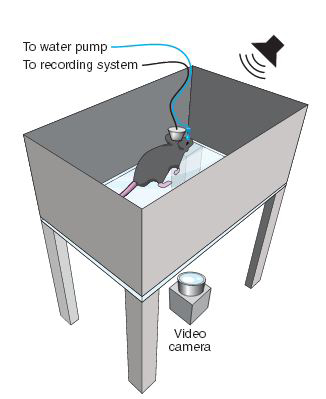Optogenetics for treating obsessive-compulsive disorders
June 18, 2013

Obsessive-compulsive mice exhibit a defective grooming response during a conditioning task (credit: Eric Burguière et al./Science)
By applying optogenetics (light stimulation) to specific neurons in the brain, researchers at INSERM (Institut national de la santé et de la recherche médicale) havere-established normal behavior in mice with pathological repetitive behavior similar to that observed in human patients suffering from obsessive-compulsive disorders.
Repetitive obsessive-compulsive disorders can become a real handicap to daily life (for example, washing hands up to 30 times a day; or checking excessively that a door is locked, etc.). Obsessive-compulsive disorders affect 2 to 3% of the population and in France, it is estimated that over one million persons are affected by this disorder.
The usual treatment for obsessive-compulsive disorders is to use pharmacological treatments (anti-depressants, neuroleptics) and/or behavioral psychotherapy. They don’t work in around one third of patients.
So it is necessary to gain better understanding of the cerebral mechanisms that cause these repetitive behavior patterns in order to provide better treatment.
Previous neuroimaging studies allowed the INSERM scientists to identify dysfunctional neuron circuits located between the front of the brain (the orbitofrontal cortex) and more deep-seated cerebral structures (ganglions at the base on the brain), in certain persons suffering from obsessive-compulsive disorders./.../
No comments:
Post a Comment